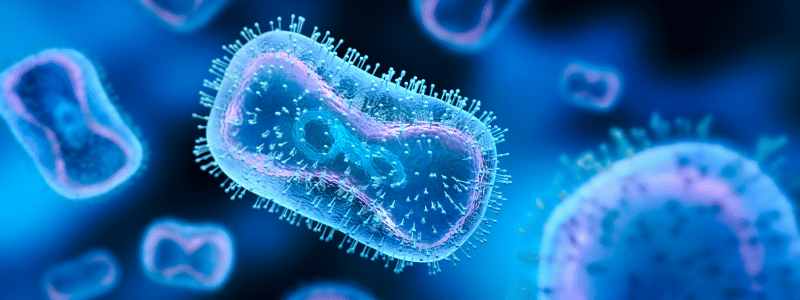
Mpox (formerly Monkeypox) is a rare zoonotic disease originally transmitted to humans from animals and caused by the enveloped Monkeypox virus. It is regarded as the most important orthopoxvirus infection in humans since the eradication of smallpox. Historically, vaccination against smallpox has been shown to be protective against monkeypox.
Who is at risk?
Mpox is usually self-limiting but may be severe in some individuals, such as children, pregnant women, or persons with weakened immune systems.
What are the symptoms?
The clinical presentation of mpox often begins with a combination of the following symptoms: fever, headache, chills, exhaustion, asthenia, swollen glands, back pain, and muscle aches.
Commonly, within one to three days after the onset of fever, the patient develops a rash that first appears on the face and then spreads to other parts of the body, including the hands and feet. The rash is sometimes confused with chickenpox.
How is it spread?
Mpox is transmitted to humans through contact with an infected animal, human, or material contaminated with the virus. The virus enters the body through broken skin, the respiratory tract, or mucous membranes. The incubation period is typically 6 to 16 days but can range from 5 to 21 days.
Human-to-human mpox transmission occurs through direct skin-to-skin contact with mpox rash or scabs from a person with mpox, contact with saliva, upper respiratory secretions, and bodily fluids or lesions around the anus, rectum, or vagina from a person with mpox.
Did you know? MPXV can spread to anyone through contact with objects, fabrics, and surfaces that have not been disinfected after use by someone with mpox. This includes items like clothing, bedding, and towels.
Tristel ClO₂ is effective against the Monkeypox virus (MPXV)
Tristel ClO₂ products are tested according to EN 14476, the European industry standard for the virucidal activity of disinfectants. Microorganisms chosen by scientists for testing under this industry standard are representative of the most resistant viruses in the medical area.
These products are also sporicidal, mycobactericidal, virucidal, yeasticidal, and fungicidal according to European Standard EN 14885:2022, the framework for European Norm efficacy testing, which includes EN 14476.
Get in Touch
Speak with a member of our sales team today to discover how Tristel helps eliminate mpox from your healthcare facility.
References:
- ECDC. “Factsheet for Health Professionals on Monkeypox.” European Centre for Disease Prevention and Control, 10 Dec 2019, www.ecdc.europa.eu/en/all-topics-z/monkeypox/factsheet-health-professionals#:~:text=Monkeypox%20virus%20is%20an%20enveloped. Accessed 23 May 2022.
- WHO. “Multi-Country Monkeypox Outbreak in Non-Endemic Countries.” World Health Organization, 21 May 2022, www.who.int/emergencies/disease-outbreak-news/item/2022-DON385. Accessed 23 May 2022.
- CDC. “Mpox – How It Spreads” Centers for Disease Control and Prevention, 01 Mar 2024, https://www.cdc.gov/poxvirus/mpox/if-sick/transmission.html#:~:text=Touching%20Objects,fetish%20gear%2C%20or%20sex%20toys. Accessed 05 July 2024.
Related Articles
We’ve passed EN 17846!
What is EN 17846 and why is it important? EN 17846 is a European Standard that specifies the test method and requirements for evaluating the sporicidal activity of chemical disinfectant […]
Learn moreUnder the Microscope – HPV
Human papillomaviruses (HPV) are small, non-enveloped DNA viruses that cause a range of diseases from benign warts to threatening cancers. There are over 200 different types of HPV. They are […]
Learn moreWebinar: Antimicrobial Resistance (AMR)
Antimicrobial resistance (AMR) is a growing global threat, driven by the overuse of antibiotics and disinfectants. This webinar explores resistance mechanisms, cross-resistance risks, and the role of proactive disinfection. Gain […]
Learn more

